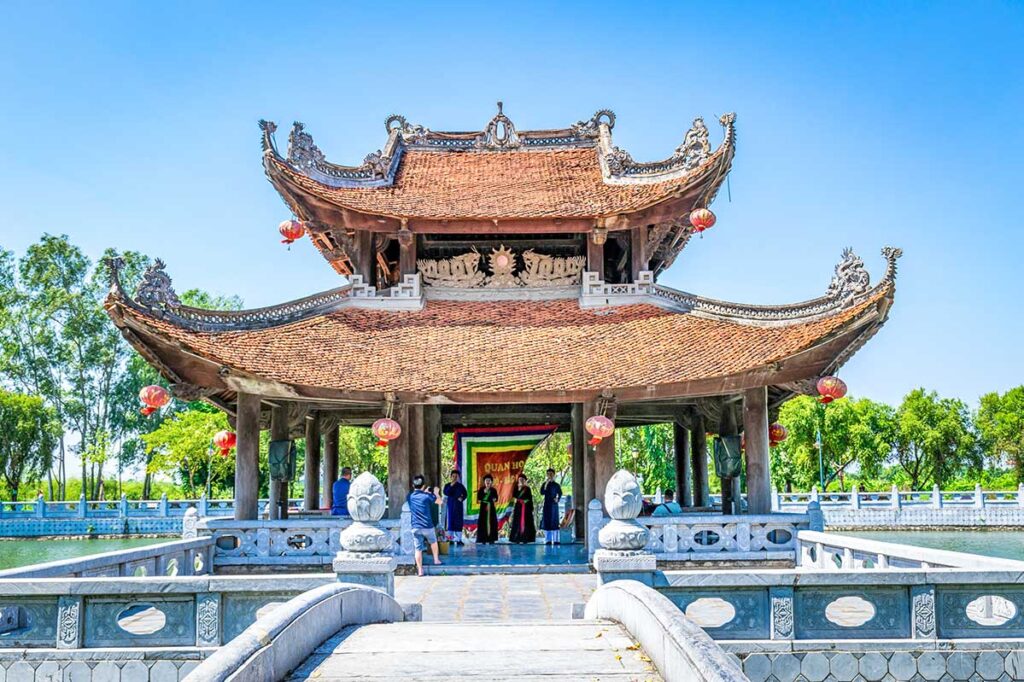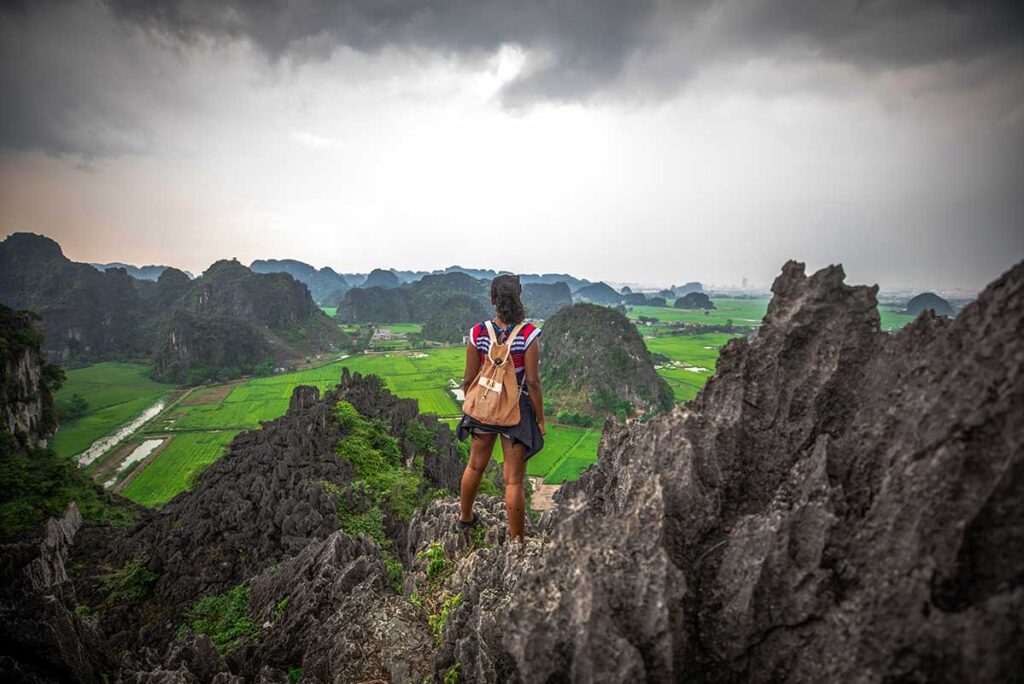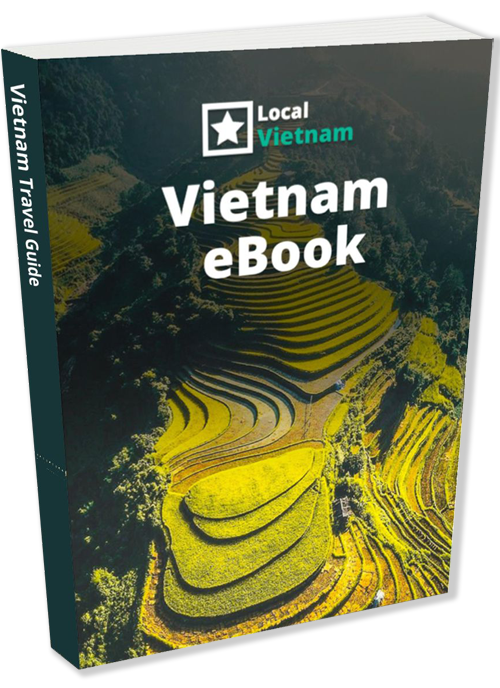About Bac Ninh
Bac Ninh, both a province and a city, is located in the Red River Delta in northern Vietnam, just a short drive east of Hanoi. As Vietnam’s smallest province by area, it is steeped in history and cultural significance, having been a vital center during the French colonial period and renowned for its intricate lacquer work and mother-of-pearl craftsmanship. Today, Bac Ninh is known for its strong cultural identity, including Quan Ho folk music, which was recognized by UNESCO as an Intangible Cultural Heritage in 2009.
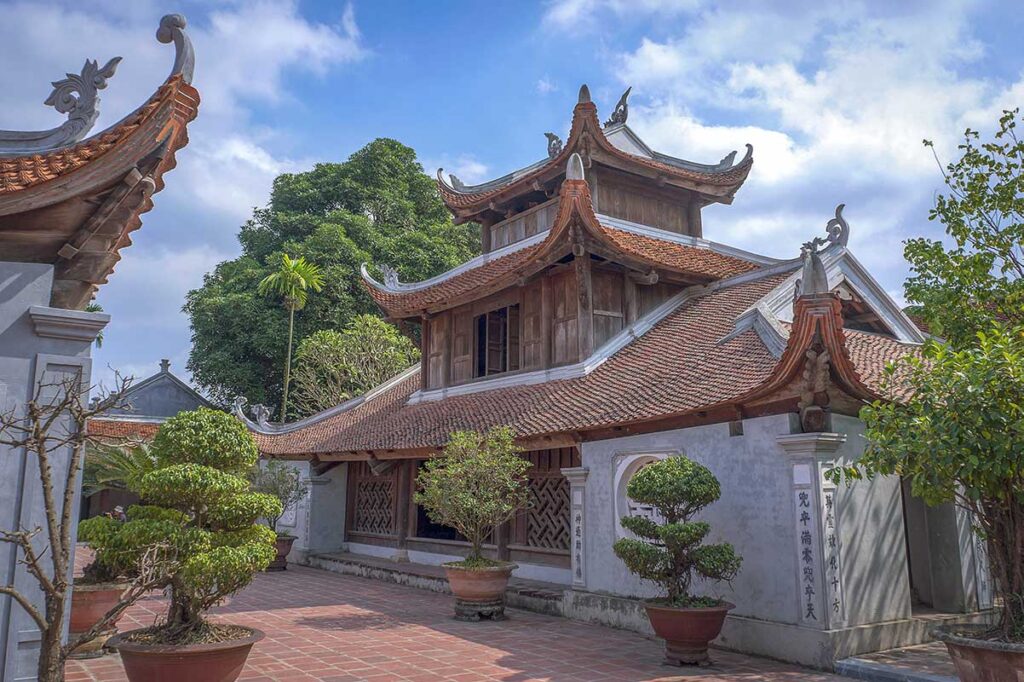
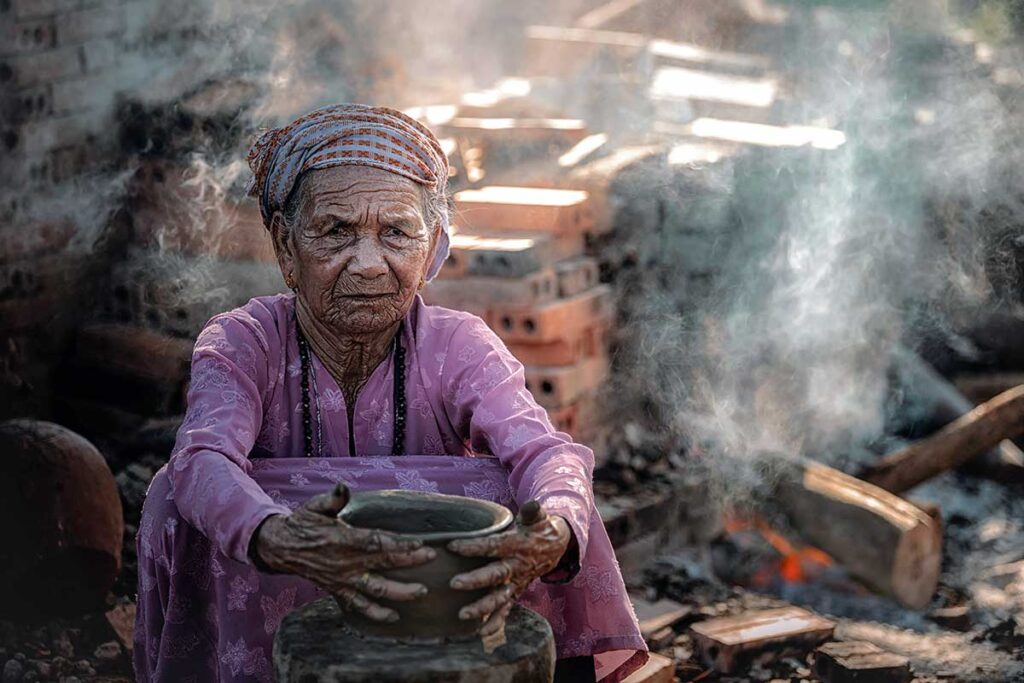
The province is also famous for its traditional crafts, including silkworm farming and silk embroidery, with exquisite Áo dài made to order in the city. While small in size, Bac Ninh offers unique glimpses into Vietnam’s cultural traditions, making it a fascinating day trip destination. With historic temples, craft villages, and cultural performances among the things to do in Bac Ninh, it’s a province that provides a tranquil and authentic experience.
Is Bac Ninh worth to visit?
Bac Ninh is worth a visit if you’ve already explored most of Hanoi’s attractions and are looking for a quiet cultural escape nearby. As a day trip from Hanoi, it offers a chance to experience traditional craft villages, Quan Ho folk music, and historic temples. However, it’s not a destination for extended stays, as the city and surrounding area lack the variety of attractions and activities found in larger provinces. If you enjoy exploring Vietnam’s cultural heritage and have a free day, Bac Ninh could be a rewarding addition to your itinerary.
Best time to visit Bac Ninh
Bac Ninh is located in northern Vietnam, where the weather is characterized by four distinct seasons, similar to Hanoi. The best time to visit Bac Ninh is during the dry season, which runs from October to April, with mild temperatures and minimal rainfall, making it ideal for exploring outdoor sites and attending cultural performances.
The summer months, from May to September, bring hot and humid weather, with frequent rain, which can make sightseeing less enjoyable. Winter months, particularly December and January, can be chilly, so bring warm clothing if you plan to visit during this time. Overall, the dry season offers the most comfortable weather for exploring the province.
Festivals in Bac Ninh
Bac Ninh is known as the cradle of Vietnamese culture, and its vibrant festivals reflect the province’s deep-rooted traditions and spiritual life. Visiting during a festival provides a unique opportunity to experience local culture, music, and rituals. Here are three of the most famous festivals in Bac Ninh:
Lim Festival
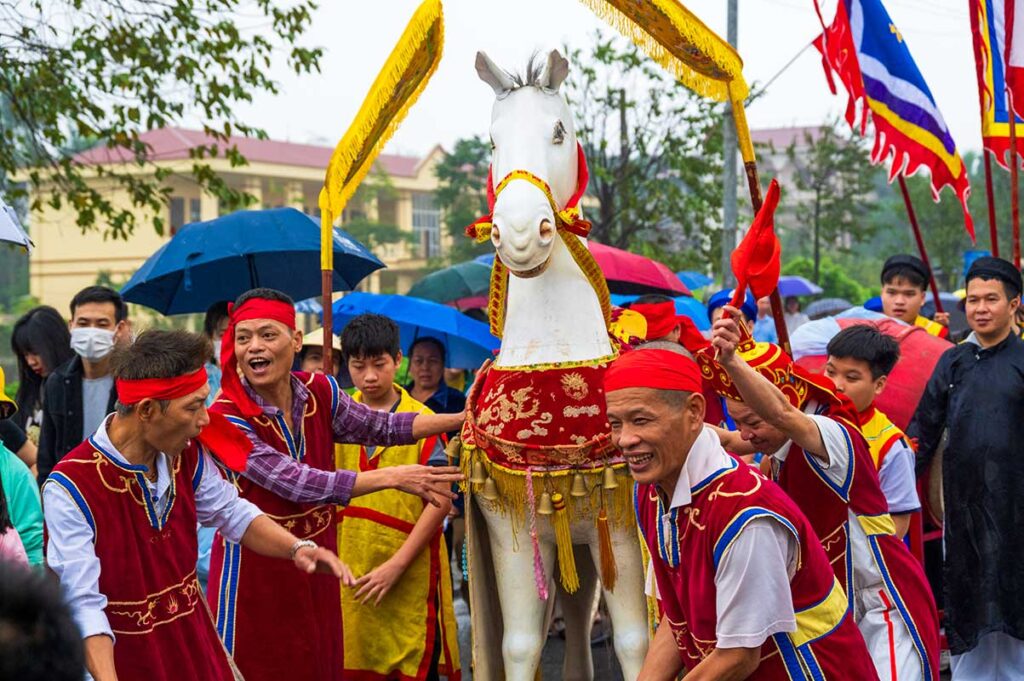
The Lim Festival is one of the most iconic cultural events in Bac Ninh, held annually on the 13th day of the first lunar month. This festival celebrates Quan Ho, a UNESCO-recognized form of folk singing that originated in Bac Ninh. Visitors can watch beautifully dressed singers perform traditional duets on boats or in village communal houses. Beyond the music, the festival also features cultural games like human chess and weaving demonstrations. It’s a must-visit for those seeking an authentic glimpse into northern Vietnamese culture.
Ba Chua Kho Temple Festival
Held at the Ba Chua Kho Temple on the 14th day of the first lunar month, this festival honors Ba Chua Kho, the “Lady of the Storehouse,” who is believed to bring prosperity and good fortune. Locals and visitors come here to offer incense and “borrow” symbolic money, which they return with interest after a successful year. The festival is particularly popular among businesspeople, making it a fascinating cultural experience for travelers interested in Vietnam’s spiritual traditions.
Do Temple Festival
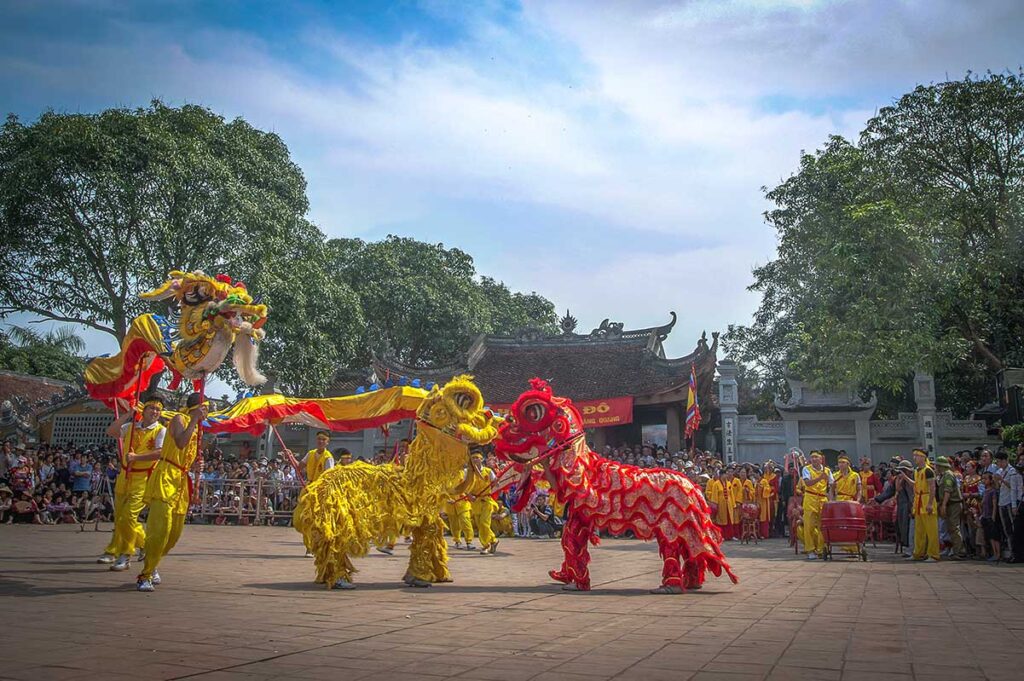
The Do Temple Festival takes place in Dinh Bang Village from the 14th to the 16th of the third lunar month. It is dedicated to the eight kings of the Ly dynasty, who ruled Vietnam from Bac Ninh. The festival features solemn processions, traditional music performances, and dragon dances, providing insight into the region’s royal history. Visitors can also enjoy various folk games and a bustling market atmosphere during the event.
How to travel to Bac Ninh
Bac Ninh is conveniently located less than an hour from Hanoi’s city center, making it an easily accessible destination for a day trip. While the province does not have its own airport, Hanoi’s Noi Bai International Airport is actually closer to Bac Ninh than Hanoi’s downtown, providing a convenient gateway for international travelers.
- Taxi and Grab: Taxis and ride-hailing services like Grab are widely available and offer a direct and comfortable way to reach Bac Ninh from Hanoi or the airport. Expect a one-way trip to cost around $15–20, depending on traffic.
- Limousine Vans: These shared, high-end vans are an affordable yet comfortable option, with reclining seats and extra legroom. Tickets typically cost $5–7 per person, and they operate regularly between Hanoi and Bac Ninh.
- Car with Driver: Renting a private car with a driver is the most flexible option, especially if you want to explore multiple sights in Bac Ninh and return to Hanoi the same day. This option also eliminates the need to wait for taxis or manage public transport schedules.
Bac Ninh travel tips
How long to stay here?
As previously mentioned, Bac Ninh is best suited for a short visit, ideally as a day trip from Hanoi. With its compact size and limited number of attractions, a single day is sufficient to experience its cultural and historical highlights.
Getting around Bac Ninh
- Taxi: Taxis are a convenient and reliable option for getting around Bac Ninh, especially for visiting sights within and near Bac Ninh City.
- Car with Driver: A car with a driver is more efficient if you plan to visit multiple sites or venture beyond the city. The driver waits at each stop and can take you back to Hanoi after your day of sightseeing.
- Motorbike or Scooter: If you’re experienced and have the necessary license, renting a motorbike in Hanoi to explore Bac Ninh can be an adventurous choice. However, navigating Hanoi’s chaotic traffic is challenging and not recommended for beginners.
Where to go next
Bac Ninh is situated on the way to Bac Giang and further to Lang Son, a province known for its scenic beauty and cultural richness. While Bac Giang is only worth a brief visit, Lang Son offers a range of attractions, including the stunning Mau Son Mountain and vibrant local markets. Both destinations can be combined for an extended northern Vietnam itinerary.
Things to do in Bac Ninh
Bac Ninh offers a mix of cultural, historical, and spiritual experiences, making it a worthwhile day trip from Hanoi for those interested in exploring Vietnam’s traditions. The province is known for its significant historical sites, traditional Quan Ho folk music, and spiritual landmarks. Below are some of the best things to do in Bac Ninh:
1. Do Temple
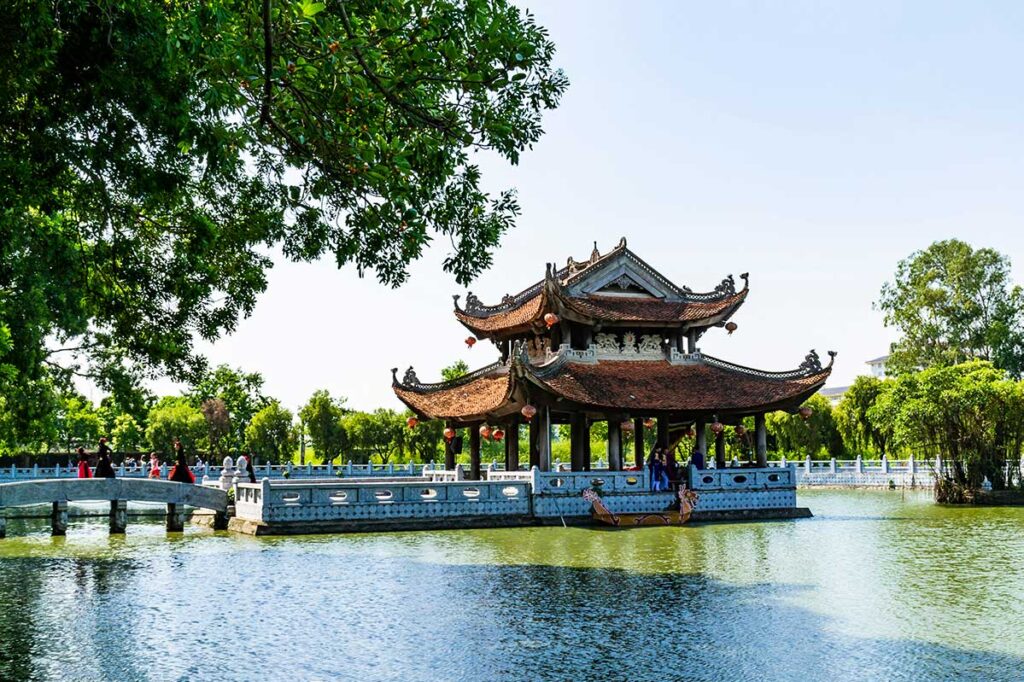
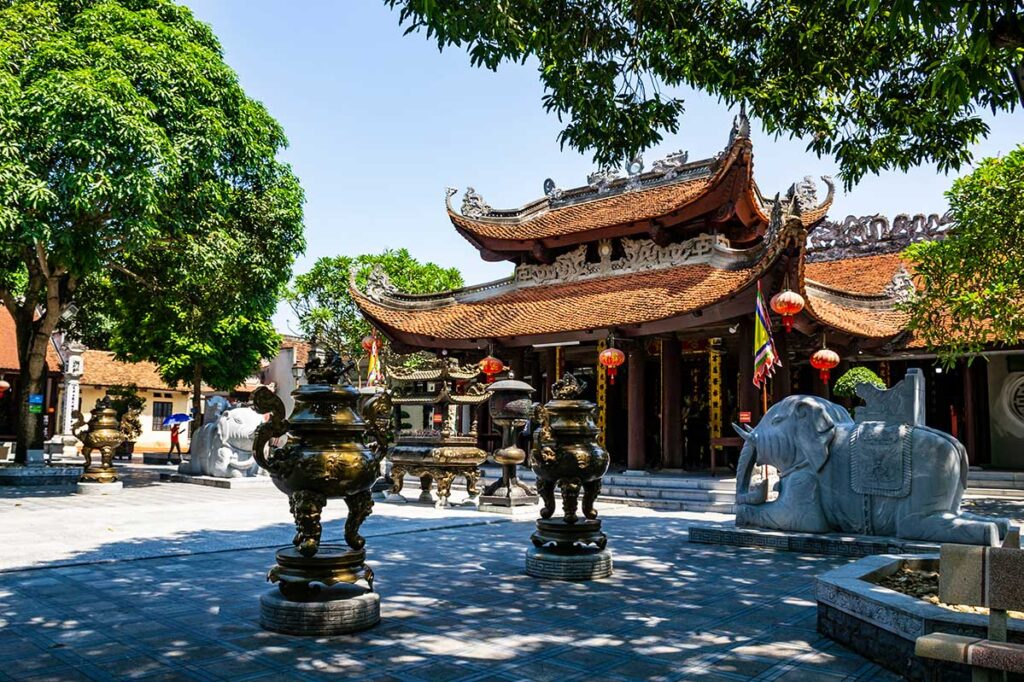
The Do Temple, located in Dinh Bang Village, is dedicated to the eight kings of the Ly Dynasty, who played a pivotal role in Vietnam’s history from 1009 to 1225. The temple complex, once a royal residence, features beautiful traditional architecture and a serene atmosphere. Visitors can explore the temple year-round, but the Do Temple Festival, held in the third lunar month, offers a unique experience with processions, lion dances, and traditional activities like wrestling and quan ho singing.
2. Dinh Bang Communal House
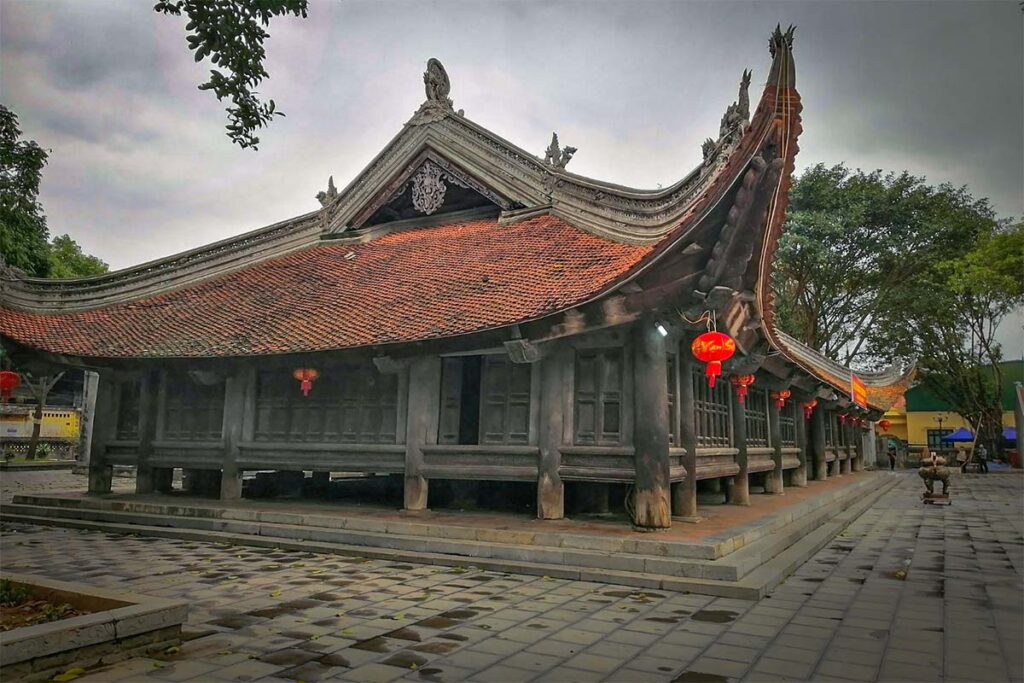
The Dinh Bang Communal House, an architectural gem built entirely of wood, dates back to the post-Ming period. It honors two spirits: Cao Son Dai Vuong (Mountain Spirit) and Thuy Ba Dai Vuong (Water Spirit), believed to have brought prosperity to the region. Additionally, the five craftsmen who rebuilt the communal house after its destruction by the Ming invaders are worshiped here. This site offers travelers an authentic glimpse into the spiritual life of Bac Ninh’s past and present.
3. Viem Xa Village
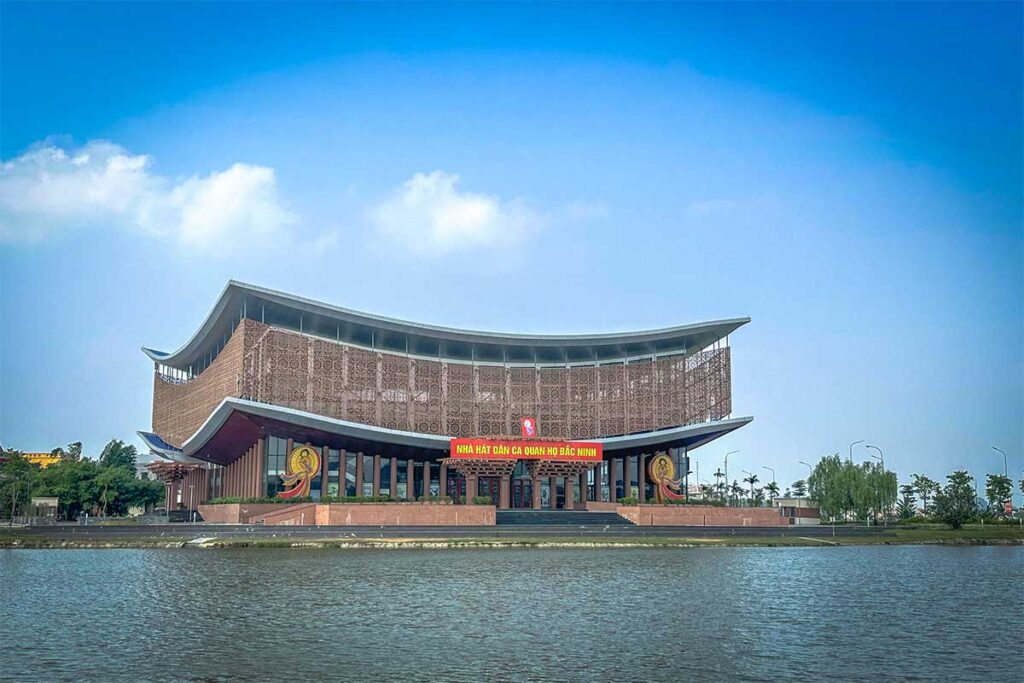
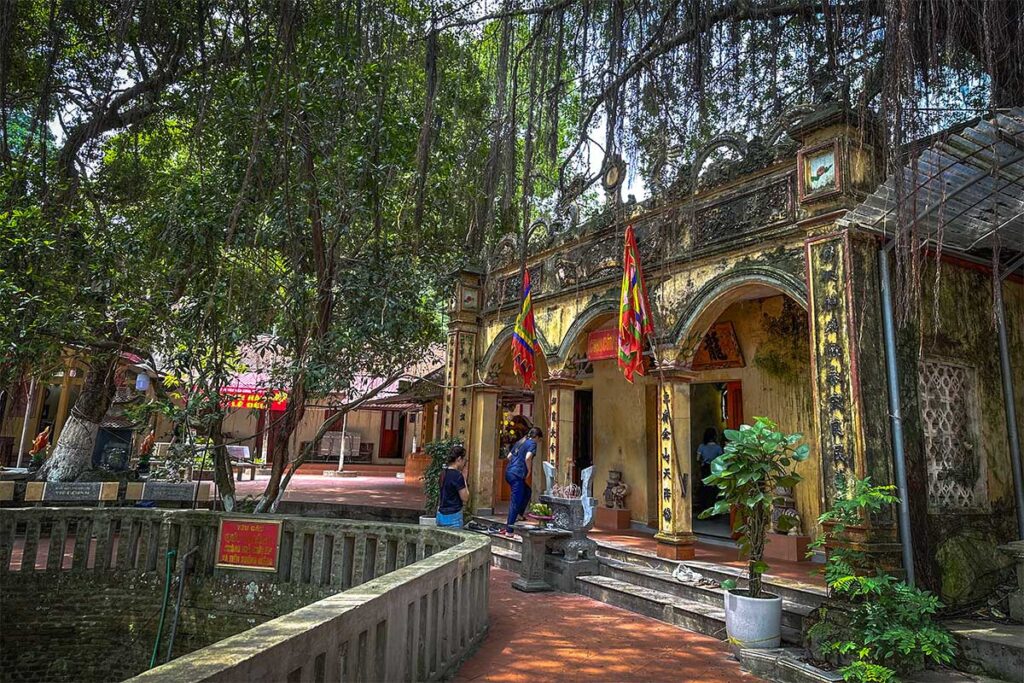
Also known as Làng Diềm, Viem Xa Village is the birthplace of Quan Ho folk singing, a UNESCO-recognized Intangible Cultural Heritage. Visitors can explore the village’s historical relics, such as the Vua Ba Temple, dedicated to the creator of Quan Ho. The village also features Cung Temple and the Tien Well, believed to have spiritual significance. For an immersive experience, plan your visit around traditional Quan Ho singing events.
4. Tieu Pagoda
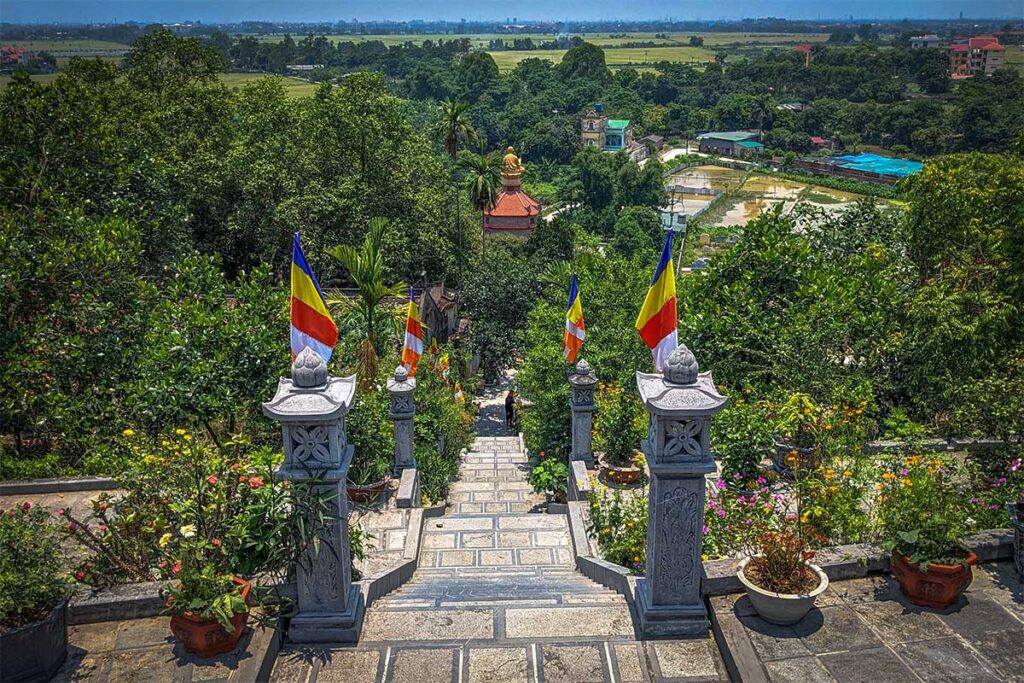
Tiêu Pagoda is a peaceful spiritual site with deep ties to Vietnam’s Buddhist history. During the Ly Dynasty, it was an important Buddhist center, led by Zen Master Van Hanh, the mentor of King Ly Thai To. The pagoda still retains its original architecture and rare artifacts that tell the story of Vietnamese Buddhism.
5. Dong Ho Painting Village
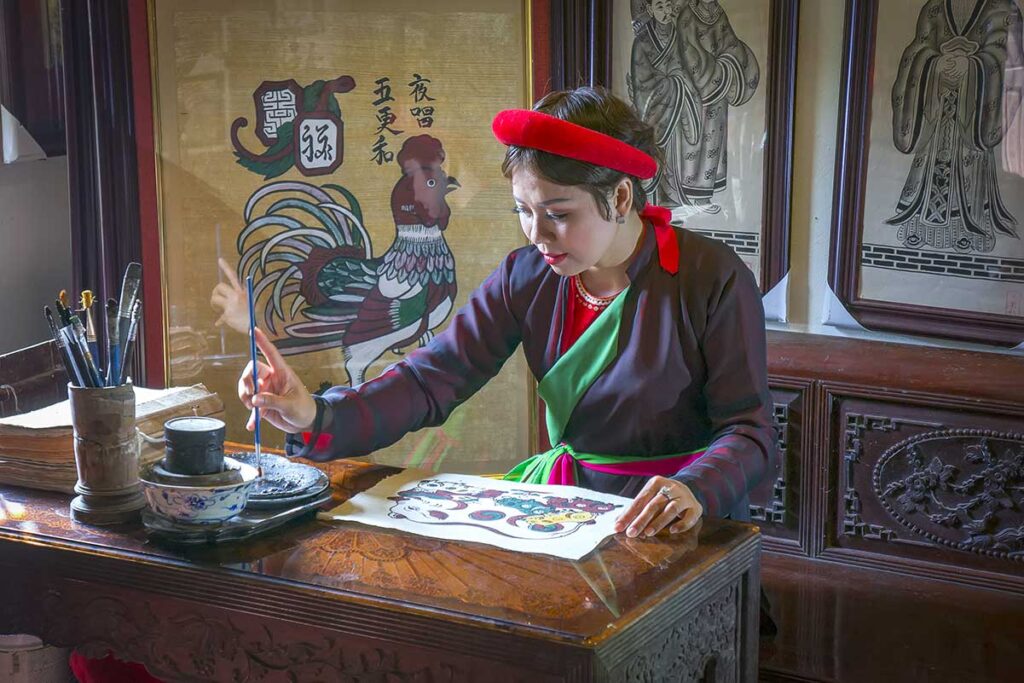
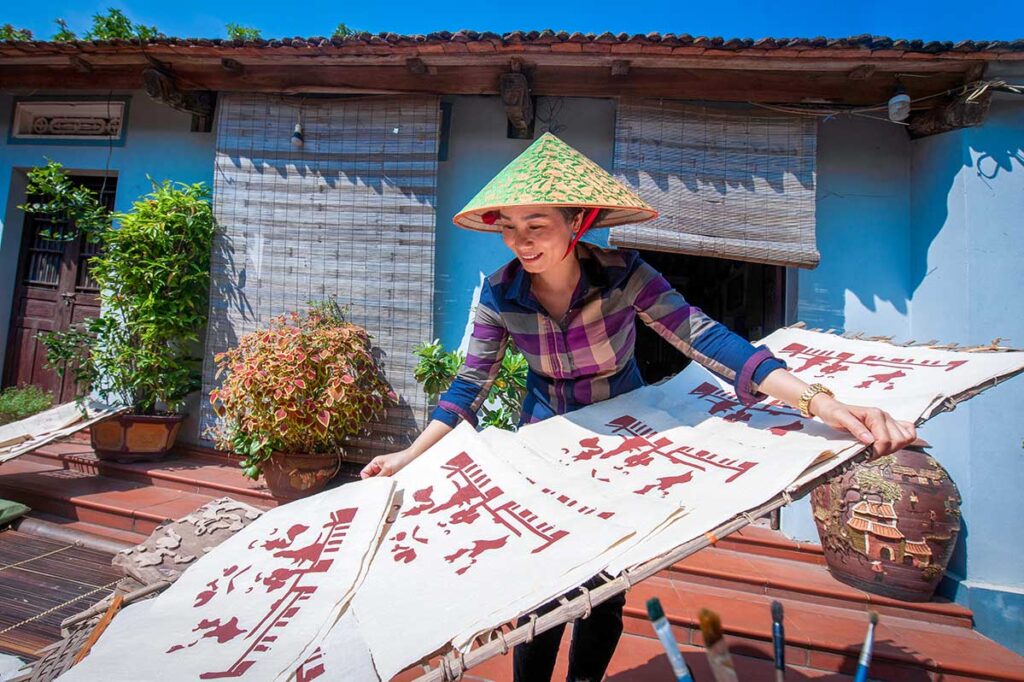
Dong Ho Painting Village is renowned for its traditional folk paintings, a unique cultural heritage of Vietnam. Using natural materials, artisans create vibrant images that depict rural life, folklore, and festivals. Visitors can explore workshops to witness the intricate printing process and even try their hand at making their own painting. The village also has a small museum showcasing the history and evolution of this art form.
6. Phu Lang Pottery Village
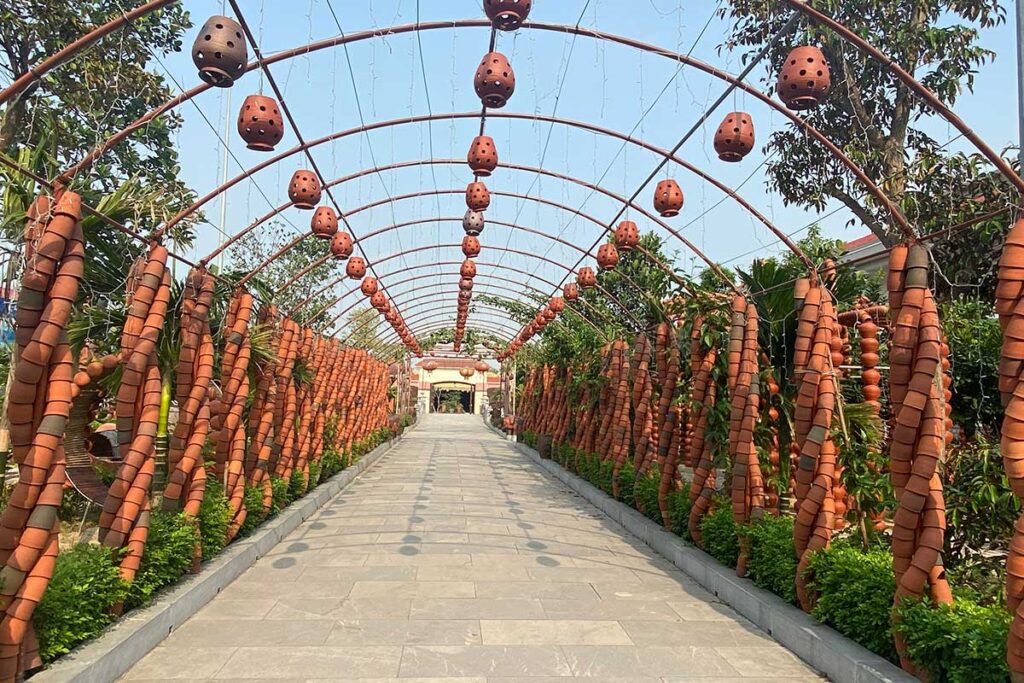
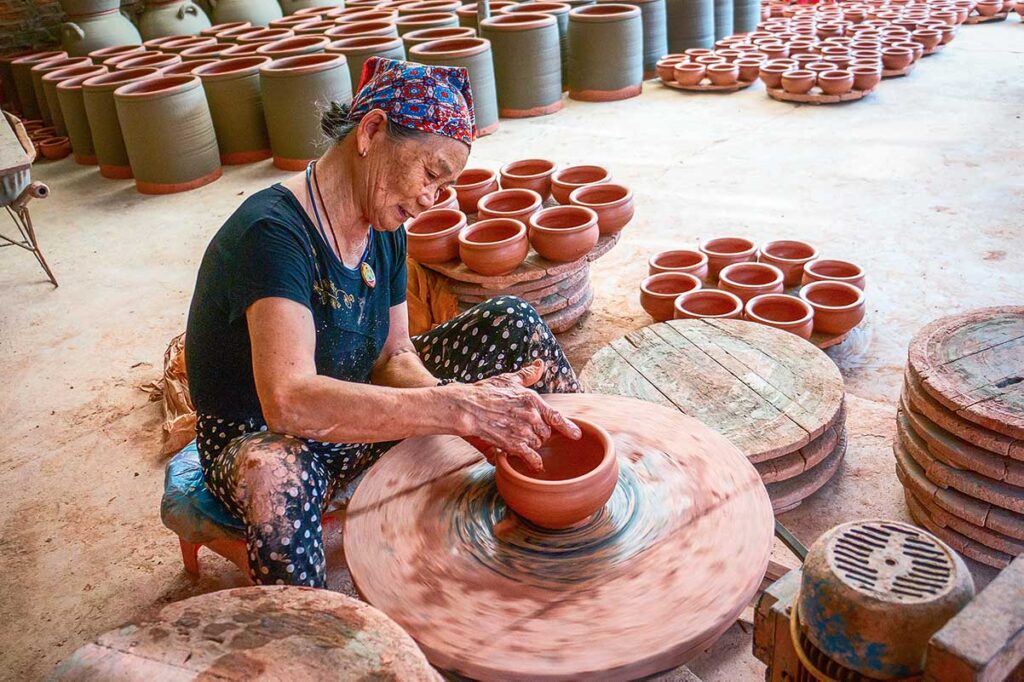
Phu Lang Pottery Village, located on the banks of the Cau River, is one of the last traditional pottery villages in northern Vietnam. Known for its rustic, wood-fired ceramics, the village produces a range of products from vases to kitchenware. Travelers can tour pottery workshops, observe artisans at work, and even participate in pottery-making sessions. Phu Lang is particularly famous for its brown-glazed ceramics, which are both functional and artistic.
7. Dau Pagoda
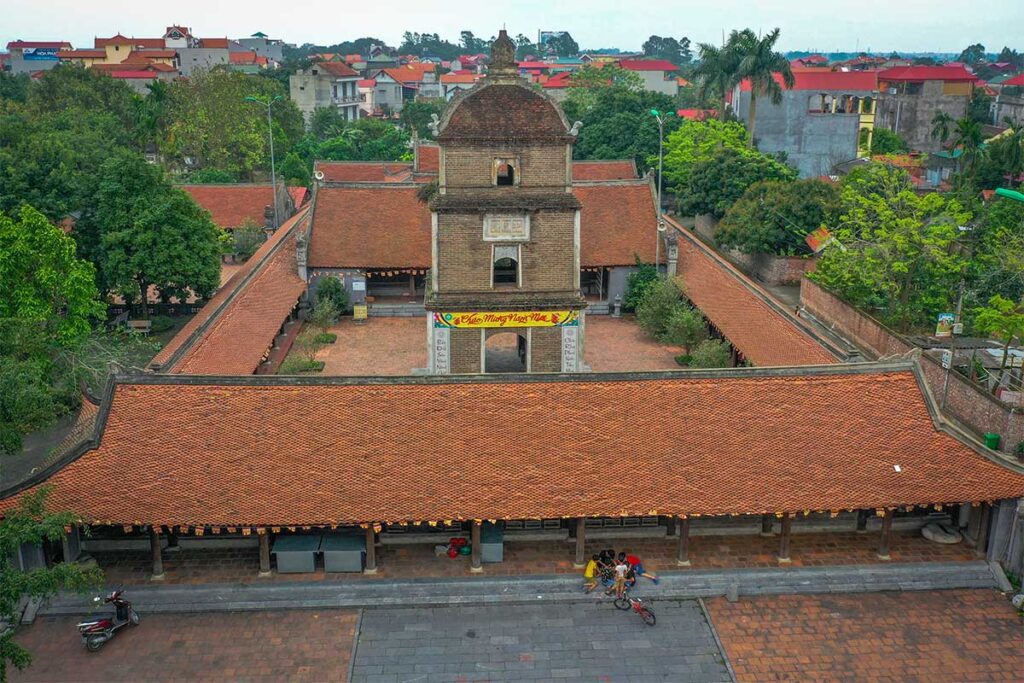
Dau Pagoda, considered the oldest Buddhist pagoda in Vietnam, dates back to the 2nd century. It holds immense historical and spiritual significance as one of the key centers of Buddhism during the Ly and Tran dynasties. The pagoda is home to ancient artifacts, including bronze statues and stone inscriptions, as well as the iconic Hoa Phong Tower, a four-sided stone structure that remains an enduring symbol of Vietnamese Buddhism.
8. But Thap Pagoda
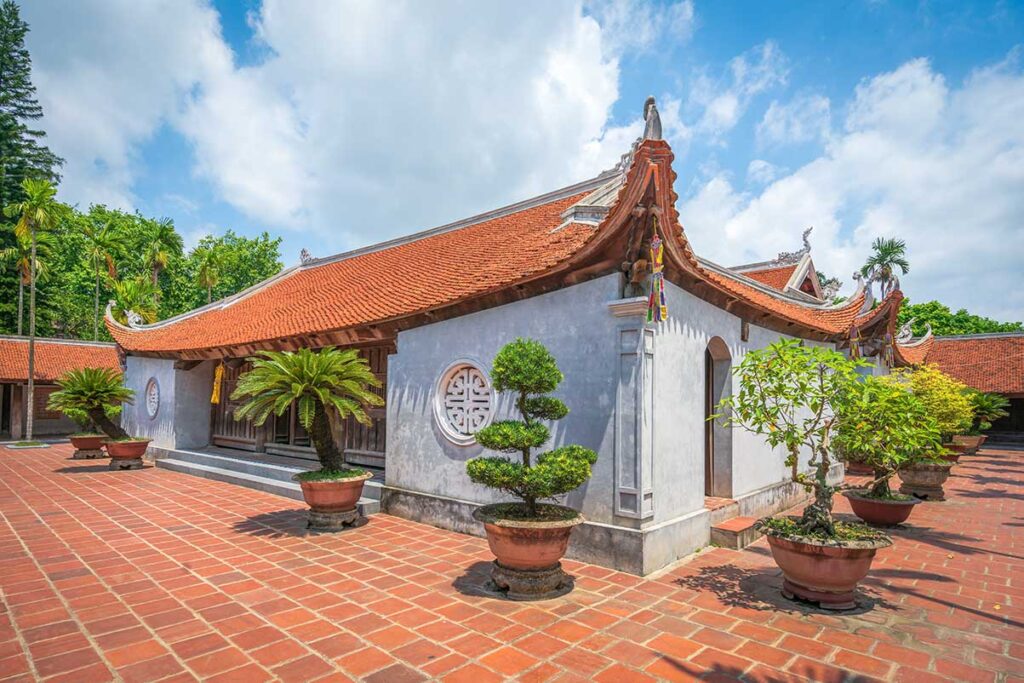
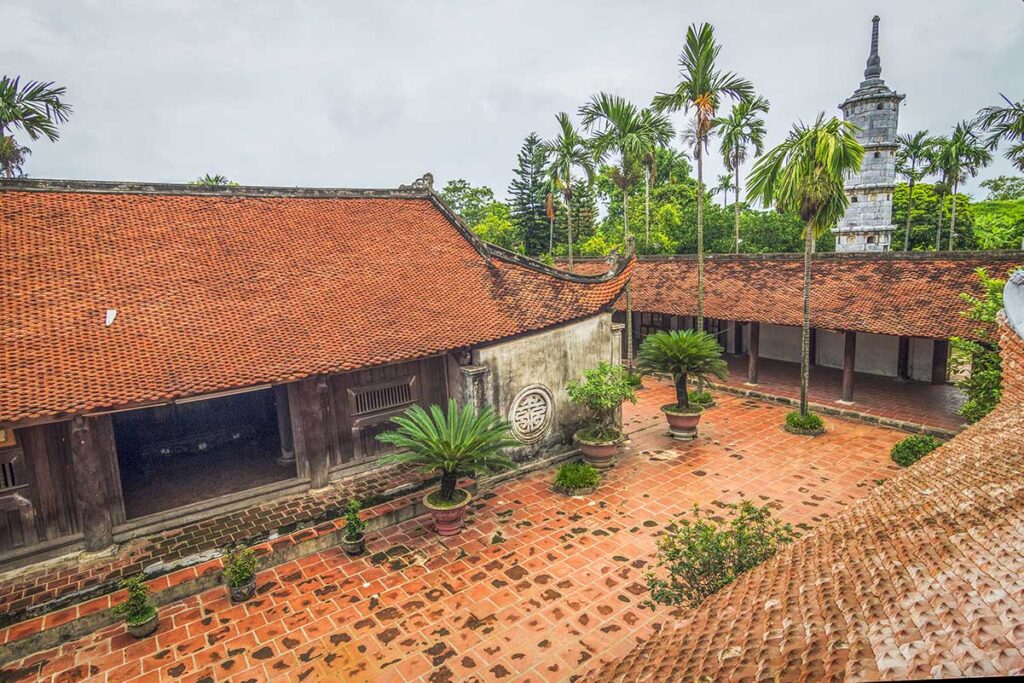
But Thap Pagoda is a masterpiece of Vietnamese Buddhist architecture, dating back to the 13th century. Known for its peaceful surroundings and exquisite sculptures, the pagoda houses the famous Avalokitesvara statue with a thousand eyes and arms. Visitors can admire its unique design, featuring intricately carved wooden altars and serene courtyards. The pagoda is not only a spiritual site but also a testament to Vietnam’s rich cultural heritage.
9. Phat Tich Temple
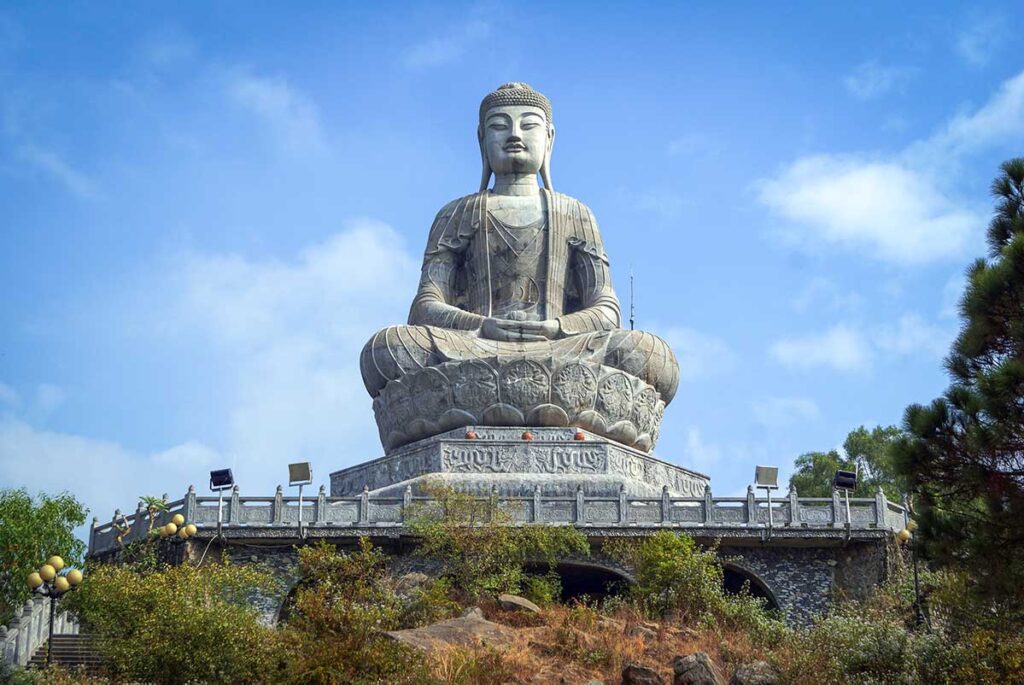
Phat Tich Temple is a significant historical and spiritual site in Bac Ninh, known as one of the earliest Buddhist temples in Vietnam. Built during the Ly Dynasty, it is celebrated for its ancient architecture and the giant stone Amitabha Buddha statue that overlooks the surrounding landscape. Visitors can also explore the beautifully maintained gardens, pagoda halls, and several smaller relics scattered across the site. The temple is an important pilgrimage destination and offers serene views of the countryside.
10. Kinh Duong Vuong Tomb and Temple
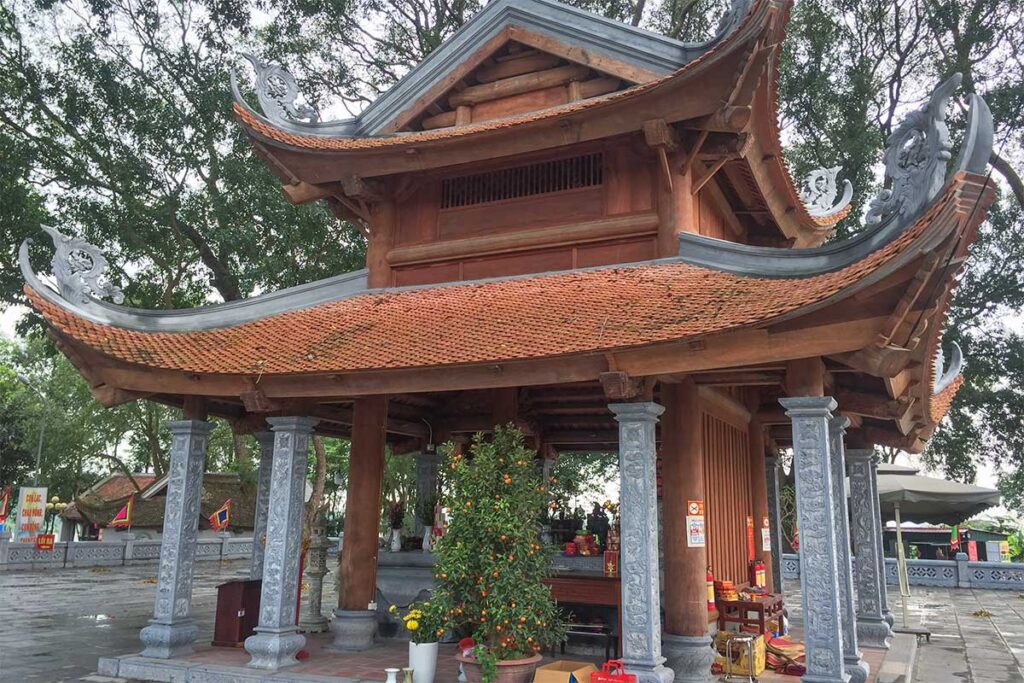
The Kinh Duong Vuong Tomb and Temple is dedicated to Kinh Duong Vuong, the legendary first king of Vietnam and ancestor of the Hung Kings. Located in Thuan Thanh District, the site is steeped in historical and cultural significance. Visitors can explore the tomb, set amidst a peaceful landscape, and learn about the ancient Vietnamese monarchy. The temple also hosts ceremonies and festivals to honor this legendary figure.
11. Le Chi Vien Relic Area
Le Chi Vien Relic Area commemorates Nguyen Trai, a revered scholar, poet, and national hero of Vietnam. This tranquil site is believed to be the location where Nguyen Trai and his family lived before the Le Chi Vien incident, which led to their tragic deaths. The area is a historical landmark, surrounded by lush greenery, and provides insight into one of Vietnam’s most influential figures and the events of his time. It’s a quiet place for reflection and a deeper understanding of Vietnamese history.
